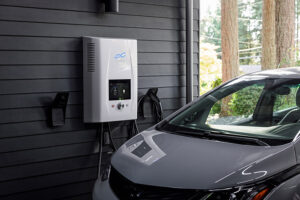EarthTalk®
From the Editors of E – The Environmental Magazine

No matter where you live in the U.S., if you don’t already drive an EV, you probably will sometime soon thanks to California’s push to ban gas-powered cars by 2035. Credit: Pexels.com.
Dear EarthTalk: How will California’s recent decision to require all new car sales to be electric vehicles (EVs) beginning in 2035 affect other states’ timelines for adopting similarly stringent measures? — M. Sergis, Tampa, FL
In late August 2022, California governor Gavin Newsom and the California Air Resources Board announced the approval of the Advanced Clean Cars II rule. This act serves as a 15-year plan to put California on the road to have all car sales be for ZEV (zero emissions vehicle) by 2035. ZEVs are considered to be either EVs (electric vehicles), PHEV (plug-in hybrid electric vehicles), or hydrogen fuel cell. Gas vehicle sales will slowly be phased out, with the first checkpoint being that 35 percent of new cars sold must be a ZEV by 2026.
This piece of legislation represents an important step in actively working against the negative impacts of climate change. Reducing the number of gas-powered vehicles on the road will help cut smog producing pollution, therefore reducing the amount of health issues related to vehicle pollution.
Air emission improvements will benefit all residents of the state, particularly low income and minority communities that often live near roadways. The approval of this law will increase the accessibility of ZEV to all California residents as it includes the development of investment programs for low-income residents to be able to purchase ZEVs.
Furthermore, consumers will be able to save more money by switching to ZEVs as the pressure to purchase gasoline would be removed.
California is pioneering this movement, but it’s likely many other states will soon follow once the U.S. Environmental Protection Agency (EPA) formally approves California’s law.
As of now, Washington, Virginia and Massachusetts are expected to be the next three states to adopt similar mandates after approval of the rule in California. Governors in New York, Rhode Island, Oregon, Maryland and New Jersey are also considering similar legislation.
These states are among the 17 other states that follow California’s greenhouse gas regulations. Car manufacturers have few concerns about their ability to generate ZEVs, but better ZEV infrastructure nationwide (i.e., more vehicle charging stations) is needed.
Under the Clean Air Act, the EPA gave California the ability to enforce more stringent emissions standards than the federal government. Past evidence shows that states have followed California’s example when it comes to emission standards, and experts believe that a similar trend will occur with the Advanced Clean Cars Rule.
Such a movement will put unprecedented pressure on car makers to generate ZEVs, which will generate a huge and long-awaited shift in the automotive industry.
Non-California residents may be thinking of ways to support this legislation and push for its approval in their own states. Getting in touch with local Congress members, petitioning and being aware of candidates in support of legislation to reduce emissions are some of the best ways to get involved.
Once legislation is passed in other states, aiming to buy a ZEV is the best way to reduce emissions while upholding the guidelines outlined in the legislation.
CONTACTS:
California Air Resources Board, ww2.arb.ca.gov
Alternative Fuel Data Center, afdc.energy.gov/laws/recent
EarthTalk® is produced by Roddy Scheer & Doug Moss for the 501(c)3 nonprofit EarthTalk.
See more at https://emagazine.com
To donate, visit https//earthtalk.org
Send questions to: question@earthtalk.org
